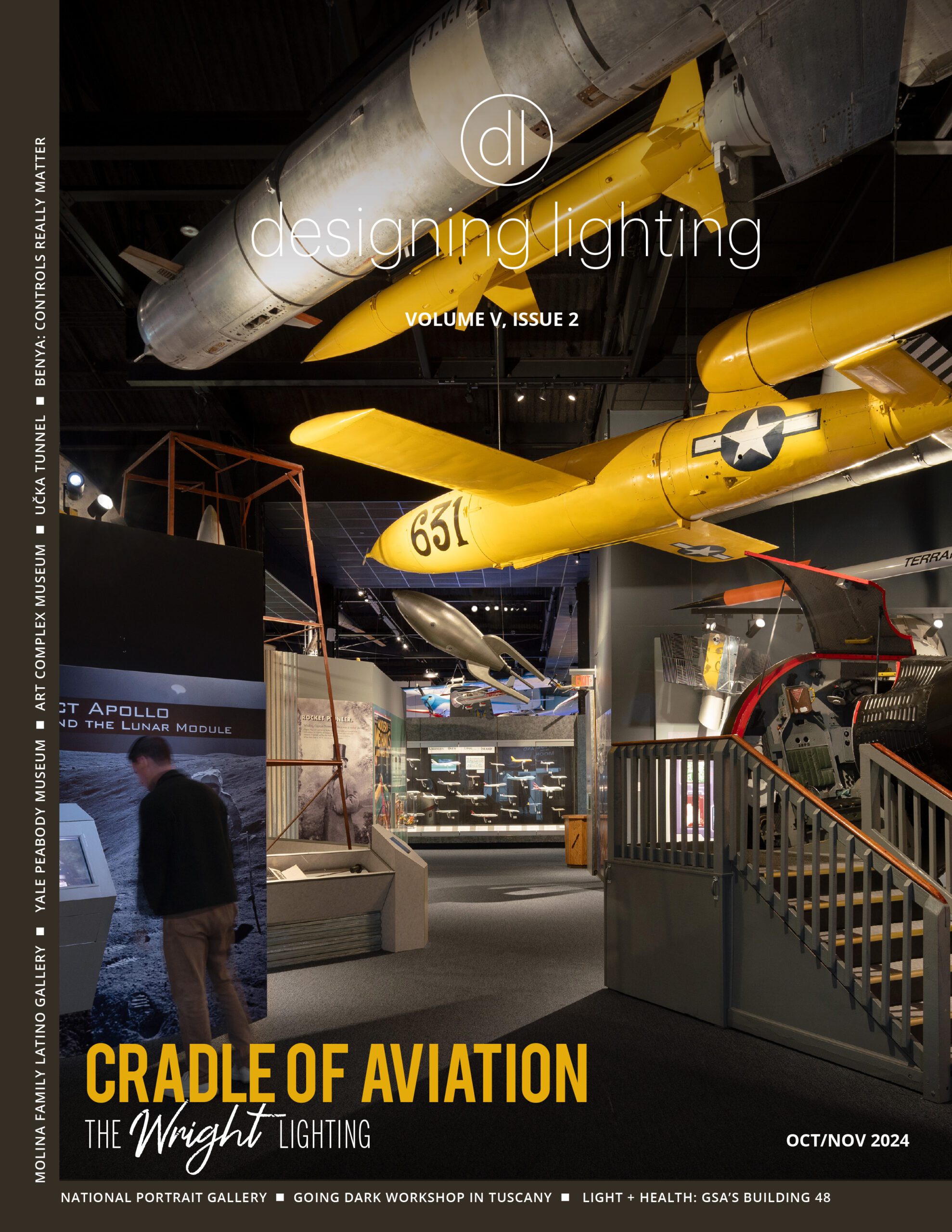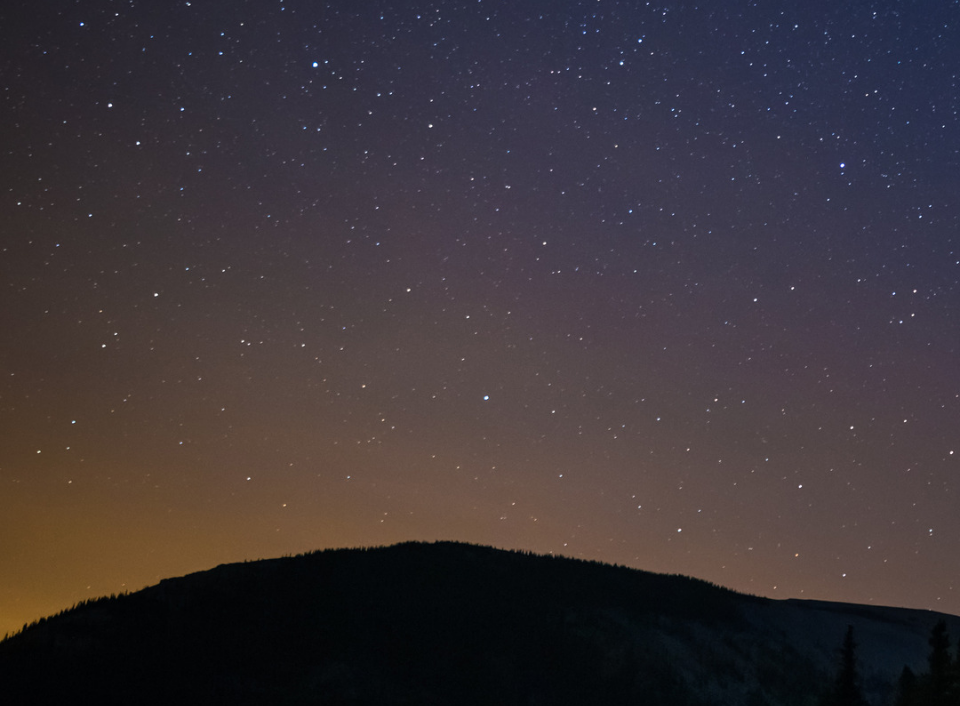Light pollution is destroying natural darkness with severe consequences. Scientists link light pollution to global insect decline, the death of millions of migrating birds, increased carbon emissions, circadian disruption and resultant diseases. At present, it is estimated that 83% of the world’s population and 99% in the U.S. and Europe live under light-polluted skies. Scientists estimate that light pollution is increasing globally at twice the rate of population growth. If left unchecked, we may be the last generation to know a dark, star-filled night sky.
Light pollution is not a new problem. With each advance in lighting technology it has grown. In particular, the transition to solid-state lighting over the past decade has accelerated this trend as cheap, bright, and energy efficient LEDs have become the norm. A 2020 study from the University of Utah examined light pollution from an environmental justice perspective. The authors found that Americans of Asian, Latinx, or Black race/ethnicity lived in neighborhoods with approximately two times the rate of exposure to light pollution when compared to white Americans.
Without acknowledging and addressing the problem of light pollution head on, things will inevitably get worse. We need to take immediate steps to reverse this trend to protect remaining dark sky sanctuaries, and also reduce light pollution in communities where we live and work.
Fortunately, the solutions to light pollution exist in the catalogues of lighting manufacturers, in the work of lighting designers, and through the recommended practices of professional bodies like the Illuminating Engineering Society of North America. The same solid state technology that exacerbated light pollution can, when applied with care, lead to reductions in light pollution while saving money and creating safe and welcoming places for people.
FIVE PRINCIPLES FOR OUTDOOR LIGHTING
In 2020 the IDA and IES released their Five Principles for Outdoor Lighting. When these common sense principles are followed, everyone wins.
If light is deemed useful and necessary, follow these guidelines to prevent, or when that’s not possible, minimize light pollution.
USEFUL: ALL LIGHT SHOULD HAVE A CLEAR PURPOSE.
Before installing or replacing a light, determine if light is needed. Consider how the use of light will impact the area, including wildlife and the environment.
Consider using reflective paints or self-luminous markers for signs, curbs, and steps to reduce the need for permanently installed outdoor lighting.
TARGETED: LIGHT SHOULD BE DIRECTED ONLY TO WHERE NEEDED.
Use shielding and careful aiming to target the direction of the light beam so that it points downward and does not spill beyond where it is needed.
LOW LIGHT LEVELS: LIGHT SHOULD BE NO BRIGHTER THAN NECESSARY.
Use the lowest light level required. Be mindful of surface conditions as some surfaces may reflect more light into the night sky than intended.
CONTROLLED: LIGHT SHOULD BE USED ONLY WHEN IT IS USEFUL.
Use controls such as timers or motion detectors to ensure that light is available when it is needed, dimmed when possible, and turned off when not needed.
COLOR: USE WARMER COLOR LIGHTS WHERE POSSIBLE
Limit the amount of shorter wavelength (blue-violet) light to the least amount needed.
Adopting and implementing these principles is an important first step in addressing light pollution. To not take this common sense approach to lighting is simply foolish. Why would anyone disregard them?
New technology is making it easier to deploy these principles in projects. Traditionally, the primary means that people have addressed light pollution is by specifying shielded products with warmer sources of 3000K or less. A 2014 study found that on a lumen for lumen basis, high correlated color temperature LEDs produce a visual night sky brightness up to three-times brighter than high-pressure sodium. Unfortunately, this has been born out in countless retrofitting projects that failed to consider all the factors, and as a consequence exacerbated light pollution – and annoyed many city residents with overbright and poorly controlled lights.
New technology now allows us to address the other variables, and when combined can lead to significant reductions in light pollution with no loss in performance. In particular, by managing light levels immediate steps can be taken to reduce energy use, reduce light pollution, and enhance visibility. It is still common to see municipalities specify light levels at double those recommended by professional bodies. For example, The City of Kansas City Public Works Design Criteria 5803.7, which states that the least travelled streets “shall have an average illuminance range of 1.5 to 2.2 times” the IES minimum values, and “all other streets have an illuminance range of 1.2 to 2.0 times” the national standard.
Unlike other engineering standards, there is no evidence that more light enhances safety. In fact, there is a growing body of evidence that contradict this view. Some evidence states that color contrast is more important than illumination levels, and that illuminance levels above 14 lux show no improvement in a motorist’s detection of objects.
Controls have been common in the indoor environment for a number of years. From motion sensors that turn lights off when rooms are not occupied, to dimmers that can reduce light levels in the evening, to lights that adjust their spectrum across the day from bright white during the day, to warm white at night to support our circadian rhythms.
These technologies are becoming more common in the outdoor environment. A simple and inexpensive photocell controller that dims outdoor lights after midnight can save significant energy and greatly reduce light pollution. A new generation of controlled outdoor lighting that tunes spectrum and light levels to match the particular need is an exciting prospect for the dark sky movement.
In short, the same LED technology that has contributed to overlighting our world over the past decade, has the potential to reverse light pollution overnight.
PUTTING THE PRINCIPLES INTO ACTION
Tucson, Arizona, is a major metropolitan city in the southwest United States. The city has a long-standing commitment to best lighting practices that protect the night. In fact, people who move to the area often remark on how bright the stars appear to shine. But as the city has grown, so has its light pollution.
In 2016, Daryl Cole, the Director of Transportation for the city of Tucson, in consultation with IDA member, Christian Monrad, of Monrad Engineering, and Ameresco, a global energy management firm, developed a plan to convert nearly 20,000 street lights from high-pressure sodium to energy-efficient LEDs with adaptive controls.
The conversion plan was completed in 2018. In total, 19,561 fixtures were replaced with 3,000K LED lights. To prolong the life of the lights and reduce lumen output, the lights are operated at ninety percent capacity from the hours of sunset until midnight. After midnight, most of the lights are further reduced to sixty percent of capacity until they are extinguished thirty minutes after sunrise.
The results of the conversion are encouraging. The city of Tucson is saving millions of dollars in annual energy costs. The total lumen output from street lighting was reduced from ~ 481 million to ~181 million lumens during the early nighttime hours. When the streetlights are dimmed to sixty percent, the emissions from the city of Tucson have been reduced by seven percent.
The benefits realized by Tucson’s lighting retrofit can be applied anywhere in the world. Tucson’s project manager, Jessie Sanders, told IDA, “The cost savings and the dimming capability – which also saves money on electrical usage – should be enough for any jurisdiction to consider LED conversion with dimming.” The city is realizing energy savings of $2.16 million annually, while also extending the expected life of the luminaires from 8 years to 25 years.
We now have evidence that the proportion of skyglow emanating from Tucson has been reduced by 10%, as detected at the nearby Kitt Peak Observatory. Similar steps need to be taken now to apply the principles in the residential and commercial settings. By doing this, business and homeowners can realize similar savings and further reduce the impact of light pollution on the surrounding desert region that is renowned for its dark skies, migrating birds, and rare bat populations. City officials tell IDA that they have received few comments about the change in lighting. But the differences are meaningful to wildlife, the environment, and for night sky protection. The lower lumen output results in a reduction of blue light emissions of approximately thirty-four percent, which is an important factor in making the city safer for nocturnal wildlife.
LOOKING AHEAD
Light pollution was never planned; it just happened. There is no one to blame or point to as the single cause of the phenomenon. No one set out to obscure the view of the nighttime sky, no company declared their desire to disrupt nocturnal habitats. The consequences of lighting design, in both luminaire configuration and use of them in the field, resulted in the unintended consequence of what is collectively described as light pollution. At its core, it is a classic tragedy of the commons story.
Unlike other issues the world is facing, such as the climate crisis or plastics in the ocean, this one is eminently solvable. Light pollution is not persistent – once poorly performing light fixtures are replaced, light pollution is immediately reduced and darkness restored. What is lacking is awareness of the problem and understanding of the solutions.
The International Dark-Sky Association was founded on the belief that dark skies are compatible with good outdoor lighting. Recent advances in technology mean we now have the tools needed to turn back the clock on light pollution. It is possible to restore natural darkness and ensure all communities have access to good lighting. We call on members of the outdoor lighting community to adopt the principles for outdoor lighting and join us in protecting the night from light pollution.

Wrong in Every Way. This Is the Environmental Interpretive Center at St. Andrew’s State Park in Florida, the newest facility describing the problems associated with poor lighting practices and sea turtle nesting disruption and nocturnal habitat disruption. The facility is closed at night, the access is closed at night, the lights are on regardless of need. They have chosen to use 5700K floodlights that are deemed the worst for sea turtle impact. This lighting scheme has been applied to a facility supposedly dedicated to environmental education, yet the Florida Wildlife Commission was unaware of what was being done here for over 2 years.
ABOUT THE INTERNATIONAL DARK-SKY ASSOCIATION
Artificial light at night has revolutionized the way we live and work outdoors, but it has come at a price. When used indiscriminately, outdoor lighting can disrupt wildlife, impact human health, waste money, and energy, contribute to climate change, and block our view of the universe. The International Dark-Sky Association promotes win-win solutions that allow people to appreciate dark, star-filled skies while enjoying the benefits of responsible outdoor lighting. Join us: darksky.org

How Did This Happen? Did someone actually decide that 4, 400 watt HPS luminaires were insufficient? Can we be sure this is enough? We have all heard the phrase “lurking in the shadows,” and here the lighting installation itself creates the shadows where potential harm lurks.

Comfortable lighting done right. Well designed lighting plan, and it shows. The setting is comfortable, the ambiance inviting
This article was originally featured in the April issue of designing lighting (dl)




